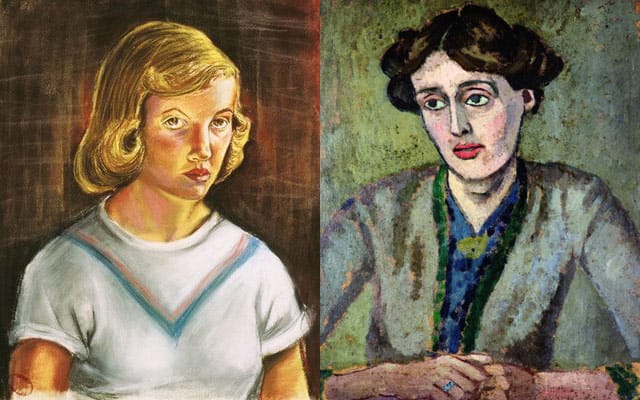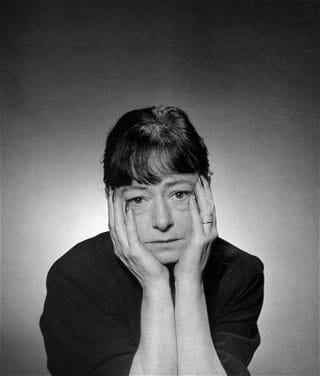Female Suicide as Fashion, Courtesy Vice Magazine
Let's start at the beginning. Vice magazine recently published a fashion spread from its new Women in Fiction issue. Titled "Last Words," it features seven models posed as female writers who committed suicide (or in one case, attempted to) at the moment of their deaths.

Let’s start at the beginning. Vice magazine recently published a fashion spread from its new Women in Fiction issue. Titled “Last Words,” it features seven models posed as female writers who committed suicide (or in one case, attempted to) at the moment of their deaths. So, you know, you have a model playing Virginia Woolf wearing a Christian Siriano coat and standing in a river, or another model posed as Sylvia Plath, sporting a Suno dress and kneeling before an oven. (The others are Dorothy Parker, Elise Cowen, Sanmao, Iris Chang, and Charlotte Perkins Gilman.) Each photo is accompanied by the name of the writer and some biographical details — dates of birth and death, cities of birth and death, etc. — plus, of course, information about the clothes the models are wearing. Classy.
Predictably (and thankfully), there was an outcry over the photos once the spread was posted online — reaction pieces of all kinds. Helen Lewis at the Guardian and Michele Filgate at Salon both worried about the images glamorizing and encouraging suicide; Michelle Dean, at New York magazine’s The Cut, faulted the photos not for their subject matter but for their lackluster approach. You could pretty much hear Jenna Sauers’s rage over at Jezebel, which caused her to pen one of my favorite reaction lines: “The Taiwanese author Sanmao committed suicide by hanging herself with a pair of stockings. Vice includes a fashion credit for the tights. Just in case you want to go buy the same ones, I guess?”
So Vice did something somewhat surprising: they took “Last Words” down (online; the spread still exists in print) and issued an apology. They offered this explanation in their post:
The fashion spreads in VICE magazine are always unconventional and approached with an art-editorial point-of-view rather than a typical fashion photo-editorial one. Our main goal is to create artful images, with the fashion message following, rather than leading.

OK, so the point is to be unconventional and different (which, yes, we all know that’s Vice’s goal, to say the least). But you have to wonder, based on that language, what was meant to be the “leading” message in this spread, since the fashion one was only “following.” Is it that suicide is bad? Or maybe suicide is good? The women do, after all, look pretty sexy. They wear striking red lipstick and have perfect hair. Maybe the message is, don’t worry, you can look good when you die! Or that if you’re a woman writer, suicide is natural. The pictures are so generic and cliche-ridden, you can attach pretty much whatever message you want to them — which is why people have managed to be angry for a number of different reasons.
But that last idea is what gets me the most. It is 2013, and we are still, still having to deal with this broadly accepted notion that women create art from life, that their life and work are inextricably bound, that who they are inevitably frames what they produce. I daresay a magazine, even Vice, would never do the same photo shoot based on male writers. Male writers struggle with depression and suicide, but we give them the benefit of not pinning their entire identities and careers on it. For female writers, it’s a milestone — and it works as a fashion statement!
The photos are less a glorification of the act of suicide than they are a glorification of these women as suicides, which is one of the oldest forms of sexism in the book. It’s more than a little ironic that taking one’s own life, the ultimate act of agency, has become such a neat vehicle for women’s objectification.
But Vice took the photos down, so it’s not much of an issue anymore, right? Oops, except, this is the internet, where nothing goes away for good. In fact, you can still see the photos — all seven of them — over at Jezebel. Despite blasting the spread as “almost breathtakingly tasteless,” the site has gone ahead and reproduced it, only without the caption info or fashion details. Do words make that much of a difference? Does this mean that Jezebel is now getting all the page views that Vice has lost? If Jezebel wants Vice to “update the post to remove the images,” perhaps they should do the same?




